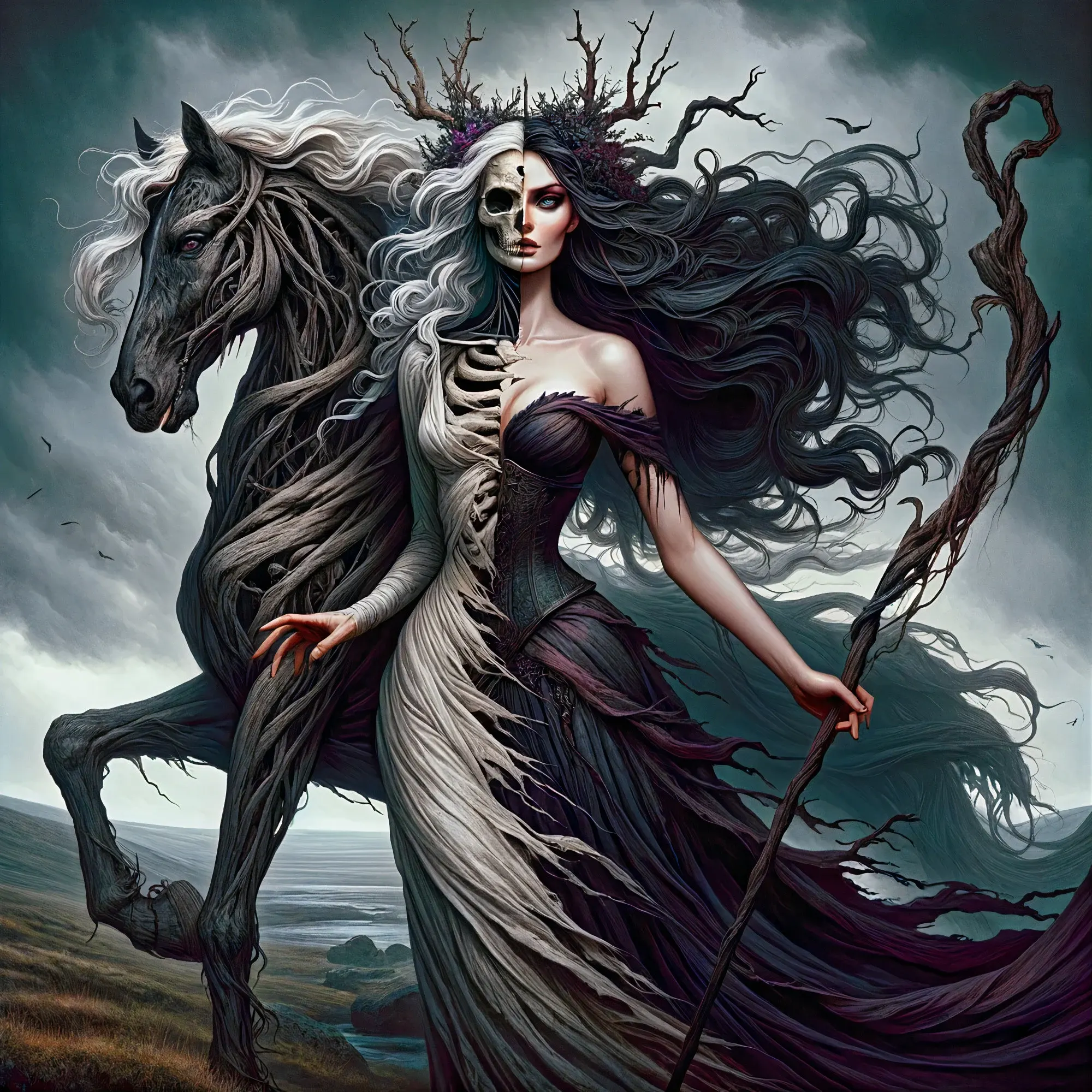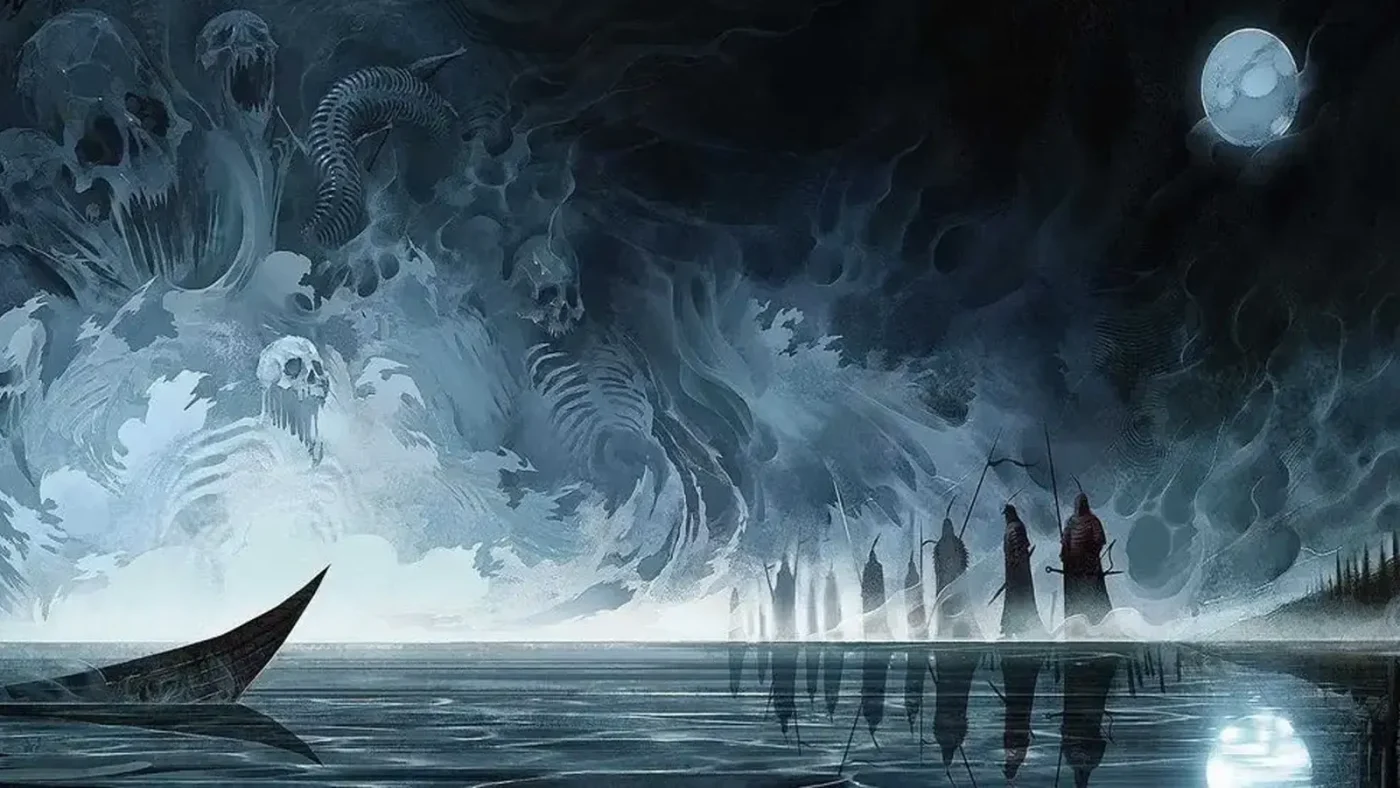Nordic Discovery
Helheim: The Frozen Underworld of Norse Mythology
In the myths of the Vikings, not all who died went to Valhalla. Some were destined for a far colder, darker place Helheim. As the Norse underworld, Helheim is a realm of silence, shadow, and eternal frost. It is where those who died of sickness, old age, or without honor were believed to journey after death.
But Helheim is more than just a land of the dead. It reflects deep themes in Norse thought: the inevitability of death, the contrast between glory and shame, and the balance between chaos and order. In this article, we delve into the mysteries of Helheim its queen, its symbolism, and its place in the Norse cosmology.
What Is Helheim?
Helheim (also spelled Hel) is one of the Nine Worlds in Norse mythology. It lies beneath the roots of Yggdrasil, in the direction of the icy realm Niflheim. It is described as a cold, misty land a sharp contrast to the fiery realm of Muspelheim and the shining halls of Asgard.
The realm is ruled by Hel, the daughter of Loki, who presides over the souls of the dead with a grim and impartial demeanor. Unlike Valhalla, which is reserved for fallen warriors, Helheim receives those who died “dishonorably” not in battle, but of age, disease, or misfortune.
Who Rules Helheim?
Hel, the goddess of the underworld, is a figure both feared and misunderstood. Half of her face and body is that of a beautiful woman, the other half a decaying corpse a symbol of the balance between life and death.
She is not evil in the traditional sense. Instead, she governs with cold justice, receiving souls and ensuring the boundaries between the living and the dead remain intact. Her hall is known as Éljúðnir, described as damp, dreary, and cold.

Who Goes to Helheim?
According to Norse beliefs, the afterlife depended greatly on how a person died. While warriors who died in battle were taken to Valhalla or Fólkvangr, others were guided to Helheim. This included:
- The elderly
- Those who died of illness
- Cowards or criminals
- Ordinary folk without heroic deeds
Though often viewed as a bleak fate, going to Helheim wasn’t necessarily a punishment. It was simply a different path one that accepted the inevitability of death as part of life.
Helheim vs. Other Norse Realms of the Dead
The Norse afterlife was not a singular place:
- Valhalla: Hall of the slain, ruled by Odin. For those who died heroically in battle.
- Fólkvangr: Freyja’s field, where she welcomed half of the battle-dead.
- Helheim: For the rest non-warrior souls and peaceful dead.
This division reflects a nuanced Norse view of the afterlife one that is more communal and functional than moralistic.
Creatures and Symbolism of Helheim
Several beings and symbols are closely associated with Helheim:
- Garmr: A monstrous hound who guards the gates of Helheim. He is said to break free during Ragnarok.
- Hel’s Dish and Knife: Her plate is called “Hunger” and her knife “Famine”, reflecting the themes of emptiness and inevitability.
- The Bridge Gjallarbrú: A golden-roofed bridge crossed by souls entering the realm, guarded by the maiden Modgudr.
These elements represent both the separation from the world of the living and the cold acceptance that Helheim embodies.
Helheim and Ragnarok
Helheim plays a significant role in the events of Ragnarok
- Hel releases the dead to fight alongside her father Loki.
- The ship Naglfar, made from the nails of the dead, carries the army of the underworld into battle.
- Garmr breaks his chains and battles the god Tyr to the death.
In this final battle, Helheim no longer remains passive it unleashes its power upon the world, contributing to the destruction that precedes rebirth.
Helheim in Modern Culture
Helheim continues to appear in literature, video games, and modern interpretations of Norse myth. Often depicted as a frozen, desolate realm, it inspires themes of isolation, reflection, and the thin veil between life and death.
From video games like God of War to series like Vikings, Helheim remains a haunting symbol of the unknown that awaits beyond our final breath.
Conclusion
Helheim reminds us that death in Norse mythology was not always glorious, but it was always part of the cosmic balance. Far from being hellish in the Christian sense, Helheim was simply where most people went a realm ruled by a cold but fair goddess, existing in the shadows of Yggdrasil.

